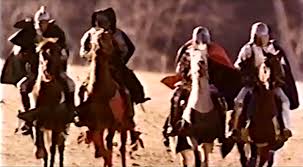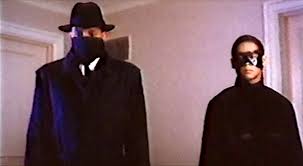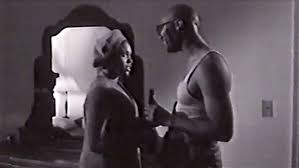🎬 Dark Angels (1998)

Review of Dark Angels (1998)
Dark Angels (1998), directed by David Wadley, is an intriguing entry into the world of low-budget, independent filmmaking that delves into themes of morality, the supernatural, and human fragility. Though lesser-known and operating within the constraints of its budget, the film offers a unique perspective on the genre, blending elements of thriller, horror, and drama. With its moody atmosphere and thought-provoking premise, Dark Angels stands out as a film with ambition, even if it occasionally struggles under the weight of its execution.
Plot Summary: A Descent into Shadows
The story revolves around a group of individuals brought together under mysterious and foreboding circumstances. Set in a small, remote town, the narrative begins with an unsettling murder that shakes the local community to its core. As the police investigate, the threads of the plot unravel to reveal an underground web of supernatural intrigue involving a secret cult, dark rituals, and a force that transcends human comprehension.
At the heart of the story is Sarah (played by an understated but compelling lead), a journalist who stumbles upon a string of cryptic clues linking the murder to a series of unexplained disappearances. Sarah’s quest for answers draws her into a confrontation with the enigmatic cult leader known only as “The Dark One” (played with eerie charisma by a standout actor). As Sarah digs deeper, she must grapple with her own moral compass, as well as the sinister forces threatening to consume her and the entire town.
The film weaves its plot through multiple layers, combining psychological tension with supernatural horror. Its pacing alternates between slow-burn suspense and moments of intense action, creating a sense of unease that lingers long after the credits roll.
Themes: The Duality of Light and Darkness
At its core, Dark Angels is a meditation on the duality of human nature and the eternal struggle between good and evil. The film’s title serves as both a metaphor and a literal reference, exploring the idea that darkness resides within everyone, but so does the potential for redemption.
The cult’s rituals and beliefs symbolize humanity’s eternal fascination with power and the lengths people will go to achieve it. Through Sarah’s journey, the film examines questions of morality, faith, and the cost of pursuing truth in a world riddled with ambiguity. The supernatural elements, while central to the story, serve as an allegory for the internal battles waged within each character.
Cinematography and Atmosphere
One of Dark Angels’ strongest assets is its atmospheric cinematography. Despite budgetary constraints, the film effectively uses lighting, shadow, and setting to create a foreboding mood. The use of dimly lit interiors, abandoned buildings, and fog-laden exteriors lends an air of isolation and dread, perfectly complementing the story’s themes.
Director of Photography (name not widely credited) employs creative camera angles and techniques to immerse the viewer in the unsettling world of the film. Close-ups and handheld shots heighten the tension during moments of confrontation, while wide shots capture the stark, desolate beauty of the town, emphasizing its vulnerability to the encroaching darkness.
Performances: A Mixed Bag
The performances in Dark Angels range from compelling to inconsistent, reflecting the challenges often faced by independent productions. The lead actress portraying Sarah delivers a nuanced and emotionally resonant performance, carrying the film with her portrayal of a determined yet vulnerable protagonist. Her journey is relatable, and her evolution throughout the story feels organic.
The supporting cast is a mix of strengths and weaknesses. The actor portraying “The Dark One” commands attention whenever he is on screen, imbuing the character with a sense of menace and gravitas. However, some of the secondary characters lack depth, occasionally slipping into clichés that detract from the story’s overall impact. This unevenness in performances slightly undermines the film’s emotional weight.
Special Effects and Practicality
Given its limited budget, Dark Angels relies heavily on practical effects and subtle visual tricks to convey its supernatural elements. While some effects feel dated or rudimentary by today’s standards, their restrained use adds to the film’s grounded and eerie aesthetic. Instead of bombastic CGI, the film leans on implication and suggestion, allowing the audience’s imagination to fill in the gaps.
The climactic ritual scene, involving flickering candles, shadowy apparitions, and a visceral confrontation, showcases the production team’s resourcefulness. This sequence is particularly effective in capturing the otherworldly tension central to the narrative.
Writing and Dialogue
The screenplay, penned by (insert writer’s name, if known), offers moments of brilliance interspersed with occasional lapses into exposition-heavy dialogue. The film’s themes are at their most potent during its quieter moments, when the characters reflect on their choices and the forces at play around them. However, some of the more overtly expository scenes feel contrived, pulling the audience out of the immersive experience.
The dialogue between Sarah and “The Dark One” during their climactic confrontation stands out as a high point, delving into the philosophical and existential underpinnings of the story. These exchanges elevate the film, offering thought-provoking commentary on the nature of power and sacrifice.
Challenges and Limitations
While Dark Angels succeeds in many areas, it is not without its shortcomings. The film’s pacing occasionally falters, with certain scenes lingering longer than necessary and others feeling rushed. Some plot threads are left unresolved, which may frustrate viewers seeking a more cohesive narrative.
Additionally, the film’s sound design, while adequate, lacks the polish needed to fully complement its atmospheric visuals. Certain sequences could have benefited from a more dynamic score or layered sound effects to heighten the tension.
Legacy and Impact
Though Dark Angels did not achieve widespread recognition, it remains a noteworthy example of independent filmmaking that dares to explore complex themes within a constrained framework. For fans of psychological thrillers and supernatural dramas, the film offers a compelling blend of intrigue and introspection.
Its ambition and willingness to tackle weighty themes resonate, even when its execution falls short of perfection. Dark Angels serves as a testament to the creativity and determination of independent filmmakers, standing as a cult classic for those who appreciate thought-provoking cinema off the beaten path.
Conclusion
Dark Angels (1998) is a flawed but fascinating film that offers a unique take on the supernatural thriller genre. Its atmospheric visuals, thought-provoking themes, and strong central performance make it a film worth watching, particularly for fans of independent cinema and psychological horror. While its limitations are evident, the film’s ambition and heart shine through, leaving a lasting impression on those willing to embrace its imperfections. For viewers seeking a story that delves into the darkness of the human soul while offering a glimmer of light, Dark Angels is a hidden gem worth discovering.